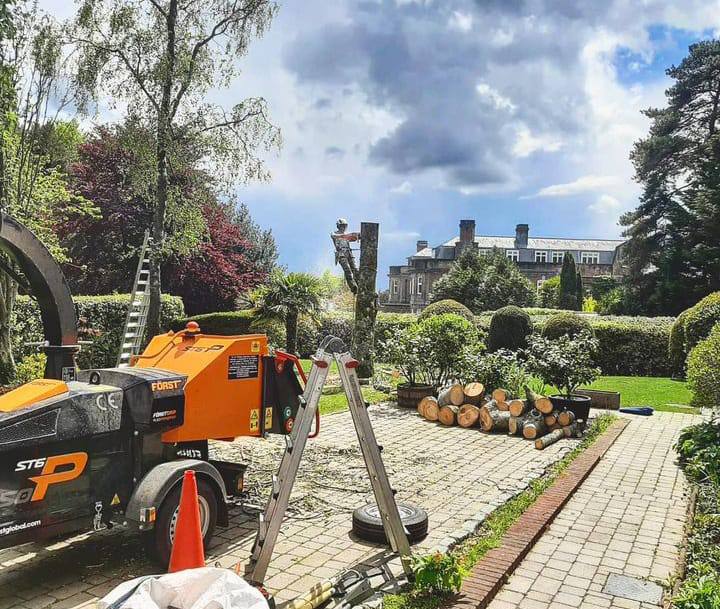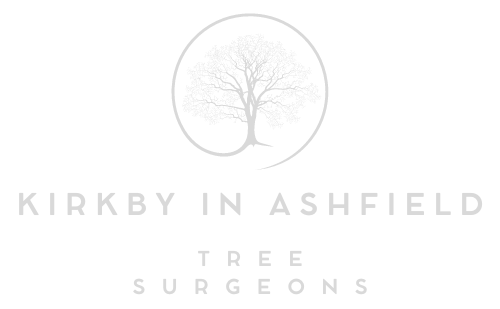What Are the Long-Term Effects of Crown Reduction on Tree Stability?
Crown reduction is a common tree surgery technique used to manage the size and shape of trees. While it can help improve tree health and aesthetics, it’s important to understand the long-term effects this procedure can have on the tree’s stability. For homeowners in Kirkby in Ashfield, Nottinghamshire, understanding the benefits and potential risks of crown reduction can help ensure that the trees on their property remain safe and healthy for years to come.
What is Crown Reduction?
Crown reduction involves the careful trimming of the upper branches of a tree, typically to reduce its size and shape. Unlike topping, which indiscriminately cuts large sections of the tree, crown reduction aims to reduce the overall height and spread of the tree by shortening the branches to a lateral growth point, leaving the tree with a more compact and balanced shape. This procedure can be performed for various reasons, such as:
- Managing Tree Size: Trees growing too large for their location can pose risks to nearby structures and power lines.
- Improving Safety: Reducing overhanging branches can help avoid potential hazards from falling limbs.
- Enhancing Aesthetics: Crown reduction can enhance the shape of the tree, improving its appearance and overall integration into the landscape.
How Does Crown Reduction Affect Tree Stability?
While crown reduction is often beneficial, it can also have long-term effects on tree stability if not performed correctly. Understanding these effects can help property owners make informed decisions about when and how to proceed with crown reduction.
- Reduced Wind Resistance: The reduction of the tree’s canopy means there is less surface area for wind resistance. While this can prevent some branch failures during storms, it can also make the tree more susceptible to windthrow (the uprooting of a tree due to wind pressure). Crown reduction can alter the tree’s natural shape and structure, making it less stable in high winds.
- Compromised Root System: A tree’s stability is not only reliant on its crown but also on its root system. Excessive crown reduction may place undue stress on the roots, as they may struggle to support the tree’s remaining canopy. This can lead to a weakened root system and an increased risk of the tree becoming unstable over time.
- Regrowth of Weakened Branches: After crown reduction, trees often experience vigorous regrowth of new branches. These new growths are typically weaker than the original branches, and if not managed properly, they can lead to structural issues and a higher likelihood of breakage in the future.
- Decay and Disease: Cutting into the tree’s structure can expose it to infection from pathogens and fungi. Without proper care and maintenance after a crown reduction, trees may become vulnerable to diseases such as rot, which can further compromise their structural integrity.
Mitigating the Risks of Crown Reduction
While crown reduction can be a valuable tool in managing the health and appearance of a tree, it’s crucial that the procedure is carried out by experienced tree surgeons who understand the long-term implications for tree stability. Professional tree surgeons will take several steps to minimise the risks associated with crown reduction, including:
- Avoiding Over-Reduction: An experienced surgeon will only remove as much of the crown as necessary to achieve the desired effect, ensuring the tree’s structure remains strong and balanced.
- Using Proper Techniques: The correct cutting techniques help encourage healthy regrowth and reduce the likelihood of decay and disease.
- Aftercare: Ongoing care and monitoring of the tree are essential to ensure that new growth doesn’t become weak and that the tree remains healthy. Regular checks for signs of disease, pests, or structural weaknesses can help preserve the tree’s long-term stability.
Conclusion
Crown reduction can be an effective method for managing tree size, improving safety, and enhancing the appearance of trees. However, it’s important to consider the long-term effects of the procedure on tree stability. By choosing a professional tree surgeon in Kirkby in Ashfield, Nottinghamshire, property owners can ensure that the crown reduction process is done correctly, with care taken to minimise the risks to the tree’s structural integrity.
For expert tree surgery and crown reduction services, contact Kirkby in Ashfield Tree Surgeons. Our experienced team is committed to providing high-quality care for your trees, ensuring their health and stability for years to come.
Call us on: 01623 700 895
Click here to find out more about Kirkby in Ashfield Tree Surgeons
Click here to complete our contact form and see how we can help with your trees needs.

